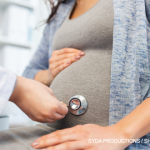The participants who had been diagnosed with osteoporosis had a much higher risk of developing SSHL than the control group. Among the participants who had osteoporosis, 91 were diagnosed with SSHL during the follow-up period. In comparison, the control group, which was triple the size, included 155 people who were diagnosed with SSHL, according to the release.
The study excluded patients who were diagnosed before 1999 and those who had SSHL before they were diagnosed with osteoporosis. In the analysis, researchers used data of the newly diagnosed with osteoporosis as the starting point and followed up the population until the hearing loss occurred, the patient died or until end of year 2011, says Dr. Tien.
There were no significant differences in patient demographics among the two groups in relation to age, sex and healthcare costs. Most patients in the study were women (89.51%) who were older than 50 years of age (91%).
The risk of hearing loss for patients with osteoporosis was higher for those older than 50 and even higher still for those older than 65. Those with severe osteoporosis may have higher risk of SSHL than patients with milder cases, the authors note.
Dr. Tien says the study provides clues through the population-based evidence of the relationship between osteoporosis and sudden hearing loss. But he and his coauthors note that osteoporosis and hearing loss are both “complex disorders that may be caused by multiple mechanisms, such as cardiovascular risk factors, bone demineralization inflammation and endothelial dysfunction.”
Future Directions
“Since a population-based study has certain bias, future studies may have to do more detail and investigate whether anti-osteoporosis therapy can protect or prevent the risk of future hearing loss,” says Dr. Tien.
Catherine Kolonko is a medical writer based in Oregon.
References
- Yeh MC, Weng SF, Shen YC, et al. Increased risk of sudden sensorineural hearing loss in patients with osteoporosis: A population-based, propensity score-matched, longitudinal follow-up study. J Clin Endocrinol Metab. 2015 Jun;100(6):2413–2419.
